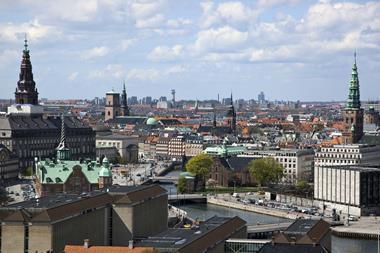Denmark’s ATP has said the very high returns it won on Danish equities were not due to short-term tactical investing but the result of thinking long-term and picking companies with global sales.
Carsten Stendevad, chief executive at ATP, which runs the Nordic country’s giant supplementary labour-market fund, told IPE: “The Danish portfolio did better than the market, but that’s not how we evaluate it.”
He said ATP was a long-term investor and that, while it had clearly adjusted the size of its positions in the home stock market, the outperformance was not a result of short-term tactical positioning.
“This is a result of a fairly patient, long-term investment strategy,” he said.
He said ATP did not have a desire to be exposed to the Danish equity index but had rather picked companies that fit well into its global portfolio.
“Most of them are very global in their exposure, and the vast majority of their revenues are global,” he said.
ATP’s annual report revealed its equity risk class produced an overall return in 2015 of DKK11.4bn (€1.5bn) on a portfolio of assets that began the year with a value of DKK57.5bn, which equates to a 19.8% return.
By the end of the year, the portfolio had grown to DKK74.4bn.
Within this class, listed Danish shares produced a return of 48.1% compared with growth in the main Danish stock index of around 30%.
Private equity, which made up more than half of the risk class at the beginning of 2015, generated an 11.4% return, and listed foreign shares returned 3.4%.
Stendevad said the unusually high return from Danish shares had come on the back of 30% returns in 2013 and nearly 50% returns in 2014.
“So we’ve had three stellar years in Danish equities, and we’ve made DKK17bn on the back of Danish equities,” he said.
The pension fund rebalanced these holdings in the meantime, however, selling around DKK10bn of them and re-deploying the proceeds elsewhere in its investment mix, he said, adding that this process would continue.
Asked whether, looking ahead, he was moderately bullish on equities in general, Stendevad pointed to the fund’s allocation position.
“If you look at our current risk allocation, we are overweight equities and underweight rates and slightly underweight inflation,” he said.
“That is the best representation of our view, and that reflects our view of the market.”
Property, which falls within ATP’s inflation risk class, produced 8.9% in return, while the return implied by the absolute figures for infrastructure was 19.4%.
In absolute terms, the property portfolio grew to DKK34.6bn at the end of 2015 from DKK31.3bn at the end of the year before, and made a return of DKK2.7bn.
While equities, inflation and credit produced positive returns for ATP in 2015, the other two risk classes – interest rates and commodities – made losses.
Commodities made a loss of around one-third, or DKK1.5bn, in the year.
ATP said it reduced its risk exposure to oil by just under 60% at the start of the second half, before oil prices fell markedly.
It also cut risk in commodities by increasing diversification – by buying industrial metals and gold, for example.
Stendevad said commodities were simply an asset class ATP had included in its overall investment mix since 2006, and that it would continue to have in the new portfolio approach based on risk factors that it has now introduced.
He said the asset type was necessary because it would be needed strategically in inflationary environments or those with geopolitical risk.
“There will be many years when our commodities may not really do much in our portfolio, but in those economic scenarios that we had in mind when we put it into our portfolio, in those scenarios, it will have a very important risk-diversification aspect,” Stendevad said.







No comments yet